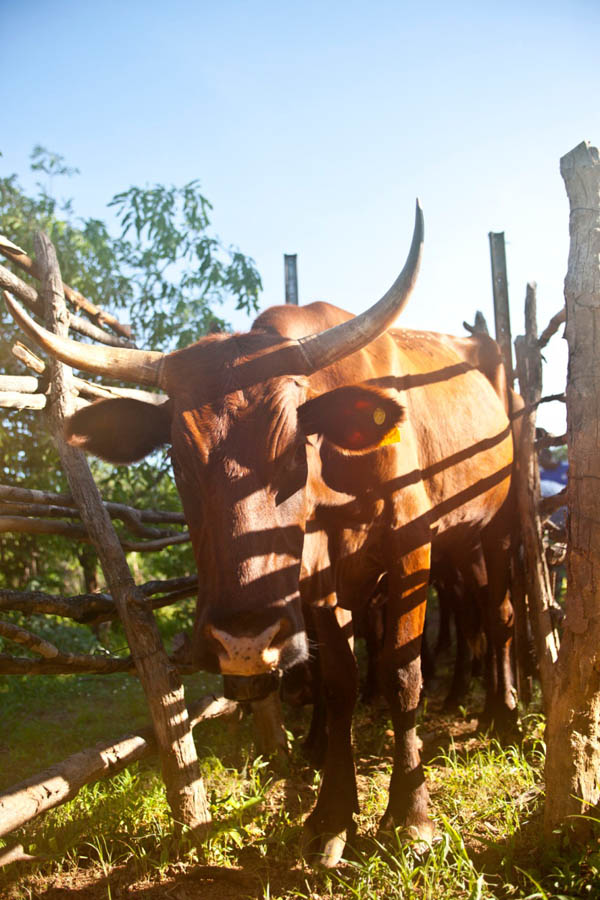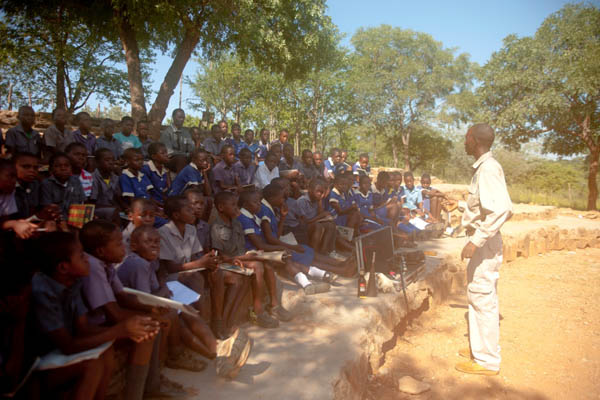News
Practical Successes of WildCRU
A newsflash from David Macdonald who, together with Andy Loveridge, continues to explain the practical successes of WildCRU’s work with a focus on: Lions and local people
Rural Africans living on the boundaries of protected areas are a frequently ignored component of the lion conservation equation. Subsistence farmers in on the boundary of Hwange National Park keep small herds of livestock (mostly goats, cattle and donkeys) and grow crops in the wet season. Life is precarious at the best of times. They also live with wild animals that are, often literally, in their backyards. If an elephant herd tramples the crop fields, families can face starvation and if lions kill the family Ox or donkey fields cannot be ploughed. The costs of this conflict with wildlife are very real and while people around the world rightly long for conservation of wild animals, the African people living on the doorstep of wildlife areas often bear the direct costs. This is one of the many reasons that in interviews Andy Loveridge and I have been stressing that modern conservation, as the WildCRU does it, involves not only biology but also economics, human development and livelihoods, agriculture, regulation and international affairs. It is also why we keep repeating that WildCRU’s work addresses not only the well-being of wild animals but also that of the people who live alongside them.
There has been much focus in recent days on hunting, both illegal and legal. However, the wider context is that across Africa, the biggest single threat to lion populations is conflict with people (often resulting in lions being killed) and loss of habitat and prey. WildCRU’s Hwange Lion Project has risen to this challenge and we are working with local people (in partnership with Zimbabwe Parks and Wildlife Authority and local district councils) to alleviate the conflict and thereby increase tolerance for large predators.
We believe that many people have been gripped by Cecil’s story in a way that transcends the life and death of one particular and beautiful lion – they have an appetite for the bigger issues and want to become a voice for wildlife conservation more widely, and to learn more about it. With that in mind, Andy Loveridge and I have drafted this newsflash on WildCRU’s work with local people living amongst lions. Since initiating this component of the project we have found that almost all livestock predation (by lions, but also spotted hyaenas) occurs when animals are left out grazing at night instead of being safely corralled in traditionally used protective enclosures. The most effective solution is to encourage people to look after their stock more effectively and build awareness of the circumstances where livestock are vulnerable. To this end we started the ‘Long Shields Lion Guardian’ programme with our partners and big cat conservation NGO, Panthera. This programme, modelled on similar concepts in Kenya, recruits ‘Lion Guardians’ in the local community who receive training and become the interface between conservation and community. These men and women are members of the community and live in the areas, they are highly respected and able to help and advise on livestock husbandry, assist members of the community to strengthen protective enclosures and search for lost animals.
The initiative melds traditional with technological solutions. The innovative aspect of this initiative is fitting lions living in the boundary areas of the protected areas in proximity to people with GPS satellite collars. The research team monitor the movements of potential ‘problem’ lions and alert the Long Shield team (all equipped with smart phones running the Whatsapp messaging platform) who warn the local community to move their livestock or avoid grazing in certain areas. Sometimes a lion gets too close to village lands and the ‘Lion Guardians’ band together and physically chase the lion back into the national park. They use the traditional African ‘Vuvuzela’ (most often seen at African football matches), which makes a strident trumpeting noise that terrifies the trespassing lion and hastens its return to the protective refuge of the park. Since introducing this initiative two years ago our careful monitoring of outcomes has shown that livestock depredation has been reduced by over 50%. These initiatives work, but they are resource intensive and costly. However if we are serious about conserving lions we have to include local communities, we have to recognise that they bear the costs of living with lions and we have to help them to find solutions that do not include killing lions. Our successes around Hwange can be replicated in communities elsewhere and we are actively looking for new areas to apply these solutions in the Kazungula-Zambesi Transfrontier Conservation area – this will be a wonderful consequence of funding made available by donations to WildCRU’s Cecil appeal.
Donations can be made at http://www.campaign.ox.ac.uk/wildcru







